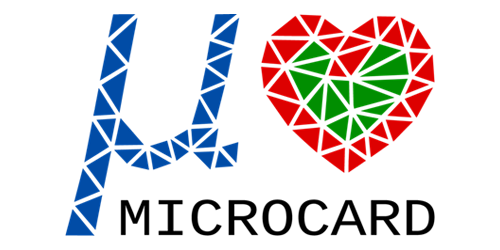MICROCARD-2 is a successor to the EuroHPC MICROCARD project. The purpose is to advance the prototype established in the MICROCARD project to scale up to exascale systems.
Cardiac function is coordinated by an electric system whose disorders are among the most frequent causes of death and disease. Numerical models of this complex system are mature and widely used, but to match observations in aging and diseased hearts they need to move from a continuum approach to a representation of individual cells and their interconnections. This makes the problem more complex, harder to solve, and four orders of magnitude larger, necessitating exascale computers.
The MICROCARD-2 project is developing a simulation platform that can meet this challenge, by a joint effort of HPC experts, numerical scientists, biomedical engineers, and biomedical scientists, from academia and industry. The goal of the project is to establish a Centre of Excellence that will consolidate and scale up the MICROCARD results enabling digital twins of cardiac tissue.
With a consortium gathering the core partners of MICROCARD, the project will further develop MICROCARD’s numerical schemes, moving to second-order spatial discretisation. Based on MICROCARD results, the team will develop mixed-precision preconditioners and data compression to reduce communication bandwidth. The highly successful efforts towards automated compilation of high-level model descriptions into optimised, energy-efficient system code for different CPUs and GPUs will be extended to upcoming architectures. The project will continue efforts to robustify parallel remeshing software and add necessary functionality for parallel mesh partitioning and production of realistic synthetic tissue meshes needed for simulations.
The platform will be benchmarked with realistic test cases and be made accessible for a wide range of users with tailored workflows. The platform will be adaptable to similar biological systems such as nerves, and several of the products such as improved solvers, preconditioners, remeshers, and partitioners will be reusable in a wide range of applications.




